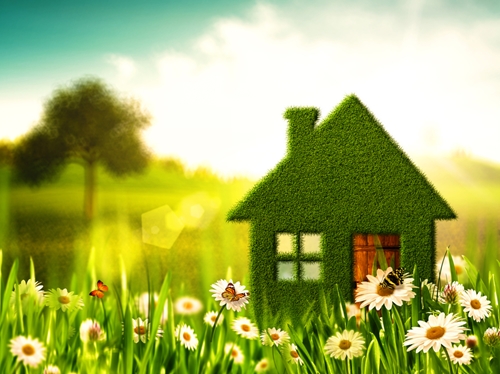
Green building practices make up one of the most prominent building trends of the last decade. Yet, given that the field of sustainability is still in its infancy, people may wonder just how satisfied people are with their environmentally friendly homes.
Survey says? They love it.
A recent study commissioned by the National Association of Home Builders found that 94 percent of people who purchased a National Green Building Standard-certified home said they would recommend a green residence to a friend. An equal percentage of people agreed that they were generally satisfied with the energy performance of their homes. Finally, 92 percent said they would purchase a green home in the future.
Energy efficient, green house plans exist in abundance for homeowners who are interested. The question remains, though, what exactly did green homeowners find so satisfying?
Defining green
An overwhelming majority of homeowners surveyed said that they understood what was meant by the term green home. The truth is, however, many people don't, even when they think they do. That's because the phrase is rather nebulous – it's an umbrella term that has morphed through connotations to refer to many aspects of environmentally and energy-conscious building. An environmentally friendly home doesn't necessarily mean energy-efficient, nor does either quite mean sustainability. Generally, though, green homes are a combination of all of these components – homes that are less damaging to the environment, minimize energy usage, built with renewable resources and possess a small carbon footprint. The National Green Building Standard is just one of many measures of these efforts for U.S. homes and structures.
Dissecting the answers
The survey, conducted by GuildQuality, centered on people's satisfaction with various aspects of their green homes, which are also common features of many green home plans. Air quality, water efficiency, heating, cooling and natural light were all scrutinized in the survey. Some 92 percent of respondents agreed that their home maintained consistent temperatures and were less drafty than non-green homes. A majority of 86 percent agreed that they had lower utility bills than in traditional homes. More tellingly, when asked what green features were most important in choosing or building green homes, the top answers were insulation, efficiency, energy, heating, cooling and windows. Those aspects that they were most satisfied with were low-utility bills, energy efficiency and insulation.
Achieving green
All of these features sound great, but it's important that homeowners understand how architects and builders achieve them. While many green homes take on a modern, minimalist look, it's important to note that green building is largely concerned with design, not style. It's possible to have traditional-looking home plans that are still sustainable. Much of what makes green homes work are efficient layout, construction and Energy Star-approved products, from windows to HVAC systems. Builders of green homes usually pay special attention to developing a tight air seal and installing high-quality insulation, which cuts down on draftiness and therefore heating and cooling bills. Additionally, green houses may maximize natural heating through strategically placed windows and heat-absorbing building materials.
Different designs
This house plan, for example, boasts plenty of green house features, while maintaining an elegant stonework design that harkens back at least a century or two. Meanwhile, this modest house plan features a simple neo-colonial style in a no-frills, high-efficiency package. In short, homeowners aren't limited by their tastes when it comes to selecting their green homes. Furthermore, even houses not originally billed as energy-efficient can still be built with Energy Star products to improve their quality in sustainability. All that's required is some forethought in the building of the home and a willingness to adjust to different, more efficient kind of living. Fortunately, plenty of intelligently designed home plans eliminate much of that hassle.